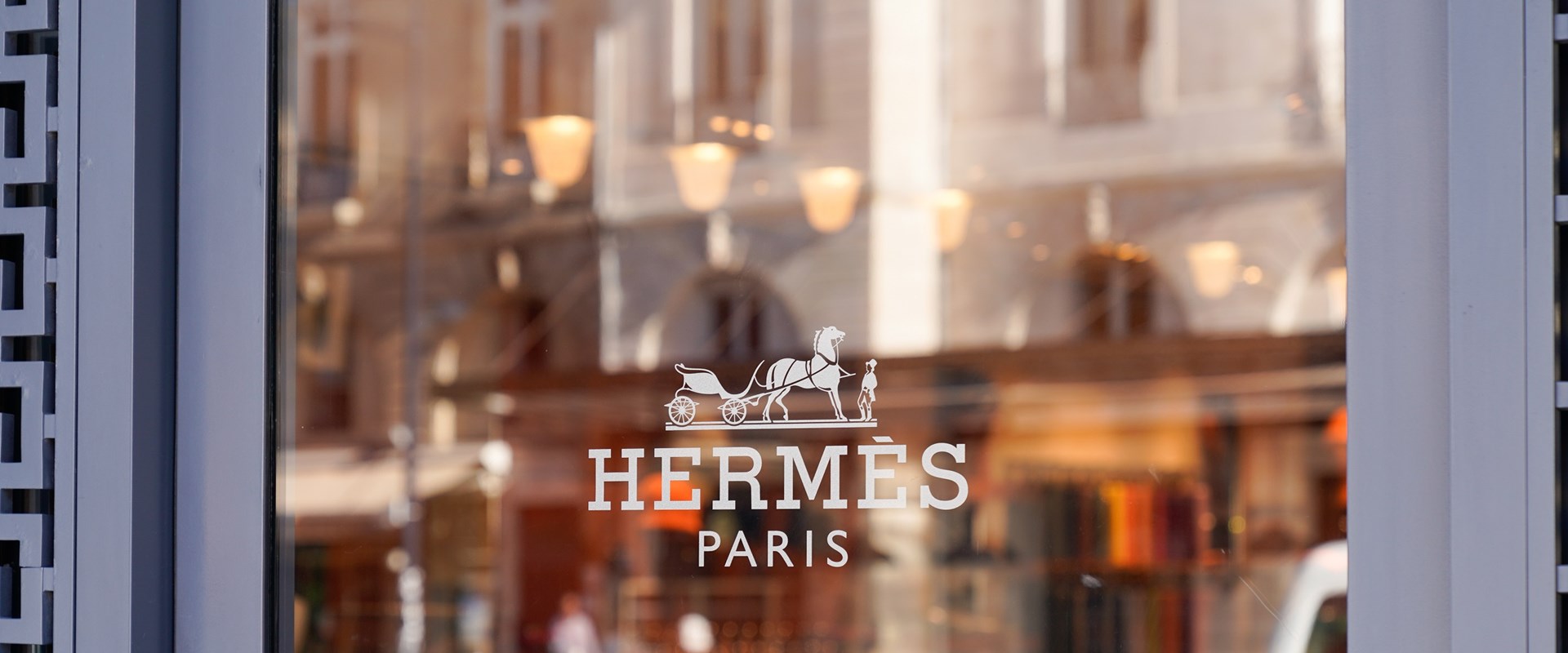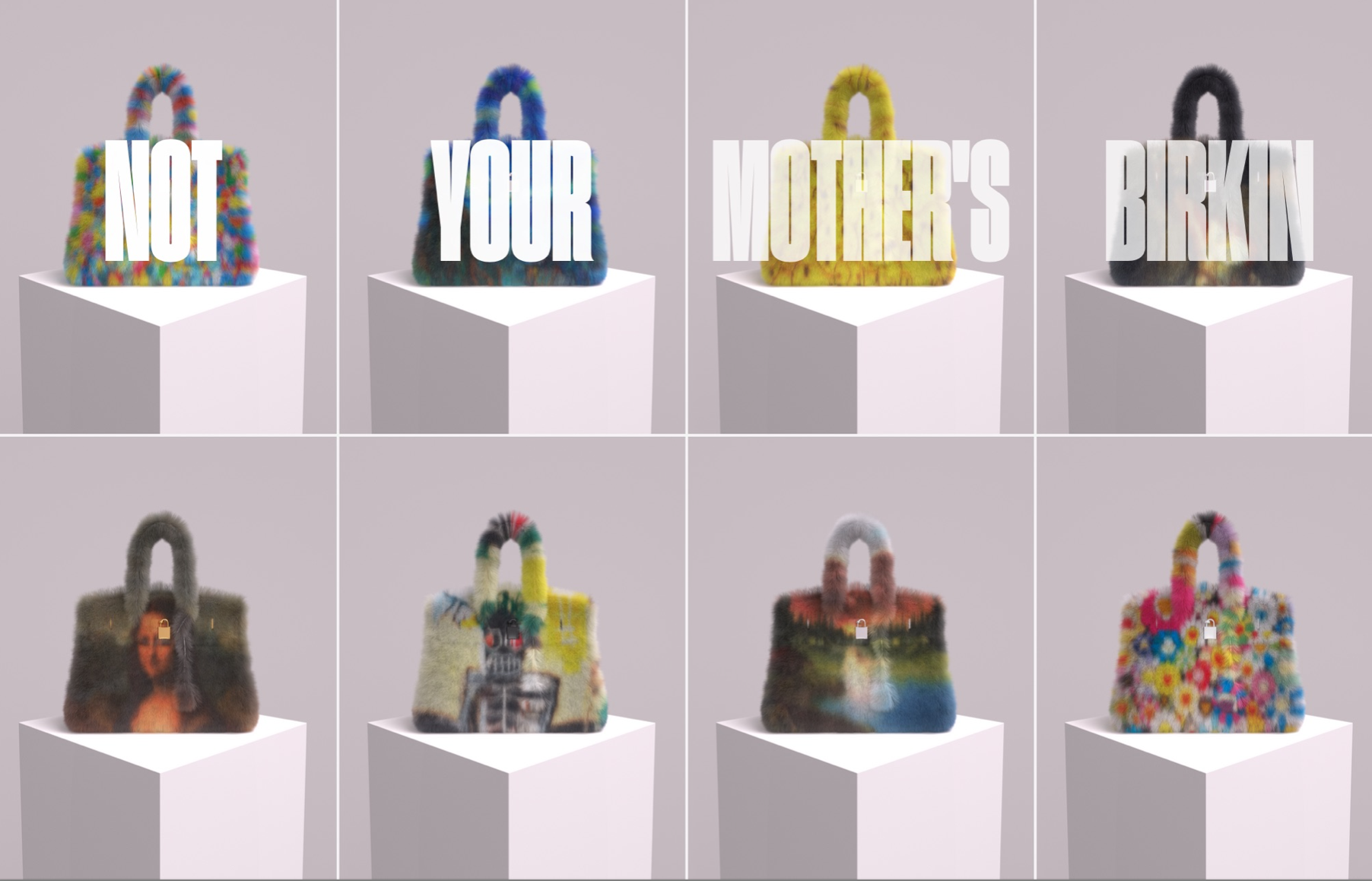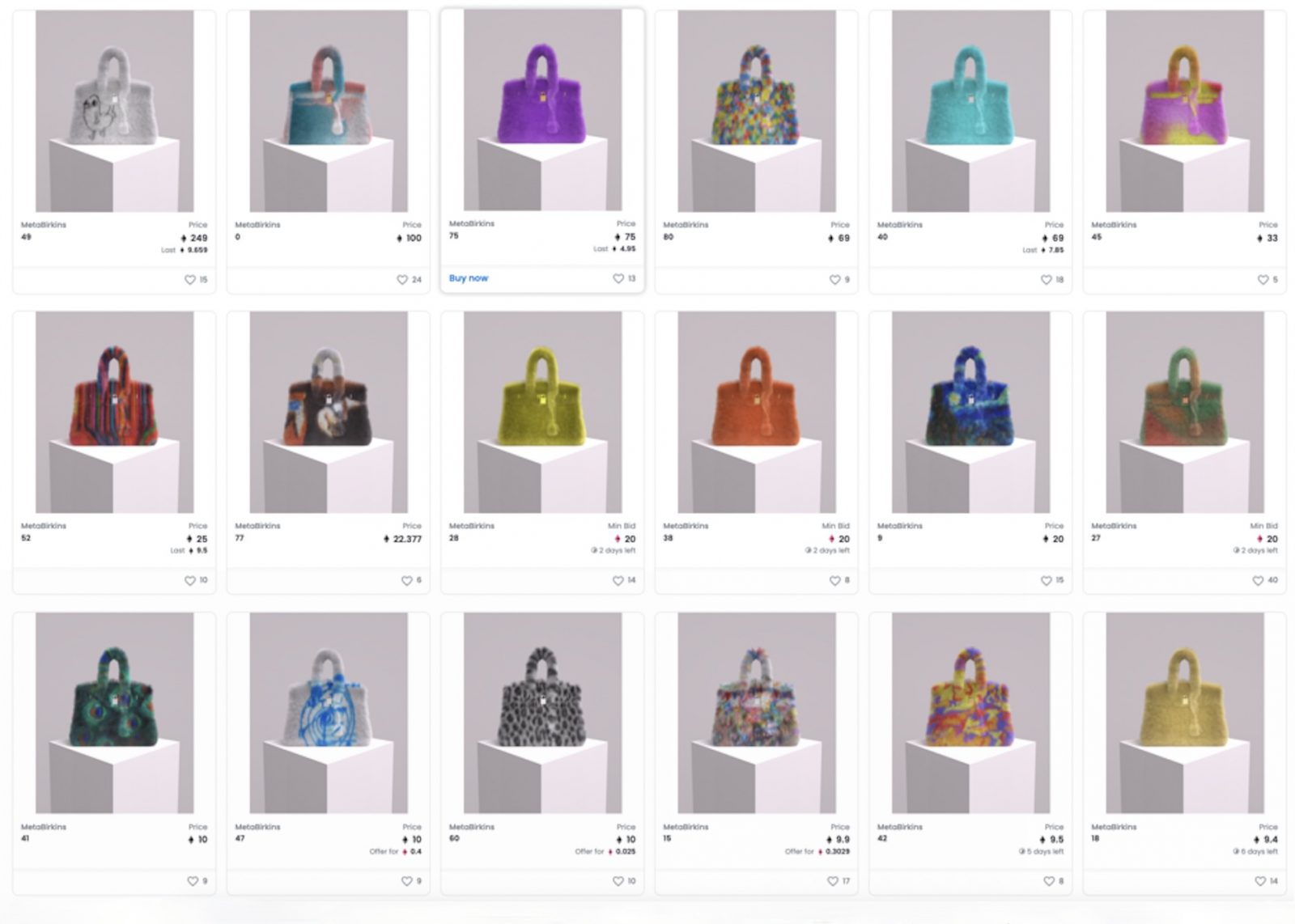By Erika Koutroumpa,
The metaverse is proving to be a very exciting place for creators, with unlimited possibilities thanks to technological advancements, endless inspiration from everyday life, and the best part: no restrictions – until now. The Hermès v. Rothschild trial is one of the first IP cases in the United States for NFTs – unique tokens on blockchain networks often used to verify ownership of digital art.
Metabirkins, a collection of 100 NFTs, was created in November 2021 and depict Birkin bags in faux furs and a variety of patterns. Rothschild used the domain name www.metabirkin.com and social media handles @metabirkins to promote the sale of the “Metabirkin” NFTs. In order to avoid lawsuits and confusion, Rothschild had included on his website: “We are not affiliated, associated, authorized, endorsed by, or in any way officially connected with the Hermès or any of its subsidiaries or its affiliates”. The collection was first released in 2021 at the Art Basel fair in Miami, claiming that the artworks “provide commentary on the way that the society places artistic value on status symbols and high valued goods”. By January of the next year, the “Metabirkin” NFTs had accumulated a profit of over 1 million dollars. This is when, on 14 January 2022, the fashion house decided to sue the artist for trademark infringement.

Intellectual property is a type of law intending to promote innovation by rewarding creators for their innovations in the fields of art and science. There are four categories of intellectual property: patents, copyrights, trademarks, and trade secrets. All of the aforementioned grant creators the monopoly to build, sell and use their creations for a limited amount of time. In exchange for the monopoly, the details of the invention must be revealed to the public so that someone “practiced in the arts” can recreate it and go under heavy scrutiny by specialized committees to be granted. The case on hand concerns trademarks, which can be any word, phrase, symbol, design, or combination of them that identifies goods or services. By owning the rights to how a phrase is used with respect to specific goods and services, a brand benefits by having legal protection for the brand, identification by customers, and protection against counterfeits and fraud. The Birkin mark dates to 1984 when the emblematic bag was first created for the actress Jane Birkin.
So far, intellectual property law covered conventional forms of art and no amendments had been made so far. The US judicial system heavily relies on binding precedent, hence why the Rogers v. Grimaldi (1989) verdict is used as a test to diagnose if a trademark infringement exists. According to this, users of a trademark are protected from infringement claims if their use is both an artistic expression and does not explicitly mislead consumers. The Langham act, 15 U.S.C §1125(a) (1982) does not bar a minimally relevant use of a celebrity’s name in the middle of an artistic work where the title does not explicitly denote authorship, sponsorship, or endorsement by the celebrity or explicitly mislead as to the content.
Hermès was represented by Norton Rose Fullbright LLP and the previously explained Lanham act is the basis of the appellant’s claims. The main position of Hermès is that due to the strength of the Birkin mark, the NFT collection is likely to cause consumer confusion and mistake in the minds of the public. Not only that, but according to US trademark law, a company must also make use of the goods and services in the chosen categories or have good faith and demonstrated intent to do so. Even though Hermès had not been involved in the metaverse yet, in the lawsuit it was shown that the mogul had intended to expand into NFTs as well before the “metabirkins” and it was supported that Rothschild’s moves harmed the firm’s plans to make use of the Hermes trademarks for such digital goods.

On the other side, Rothschild was represented by Lex Lumina PLLC – an NYC-based IP law firm featuring scholars from Harvard, Yale, and UCLA among its ranks. The respondent party claimed that MetaBirkin NFTs are artworks, no different from prior works of art utilizing brand trademarks, such as Andy Warhol’s Campbell’s soup art prints, therefore protected by the first amendment. The first amendment historically protects freedom of speech, with the artist also claiming that applying trademark law, in this case, would inhibit the expression of their opinion on society’s consumerist tendencies.
Hence, based on the data and arguments above, the US District Court of the Southern District of New York found Rothschild and the metabirkins guilty of trademark infringement and dilution, misappropriation of its BIRKIN trademark, cybersquatting, false designation of origin and description, and injury to business reputation. According to the jury’s verdict: “Rothschild’s use of the Birkin mark was not just likely to confuse potential consumers but was intentionally designed to mislead potential consumers into believing that Hermès was associated with Mr. Rothschild’s MetaBirkins project”. Hermès was awarded 133k dollars in damages for trademark infringement, dilution, and cybersquatting – approximately 1/10 of the earnings of the collection. The verdict of the trial sent a clear signal to artists about the use of trademarks in NFTs, signaling that just because the internet is an unexplored area, this does not mean that it will not be under regulations similar to those that apply to the physical world.
References
-
“Hermes v. Rothschild: A Timeline of Developments in a Case Over Trademarks”, 14 February 2023, thefashionlaw.com. Available here
-
Hermes wins U.S. Trademark trial over ‘Metabirkin’ NFTs”, Blake Brittain, Reuters, 8 February 2023. reuters.com. Available here
-
“First NFT Trademark Trial Pits Hermes Against MetaBirkin Artist”, Isaiah Poritz, 27 January 2023. news.bloomberglaw.com. Available here
-
“Hermes Challenge of “Metabirkin” NFTs to Continue”, F. Boyd, A. Chaudri, J. Brazier, July 2022, nortonrosefullbright.com. Available here
-
“The Hermes Lawsuit May Dictate the Future of NFTs”, Andrew Rossow, 30 January 2023. nftnow.com. Available here
-
Rogers v Grimaldi case brief, Lexis Nexis, accessed 1 March 2023. lexisnexis.com. Available here




